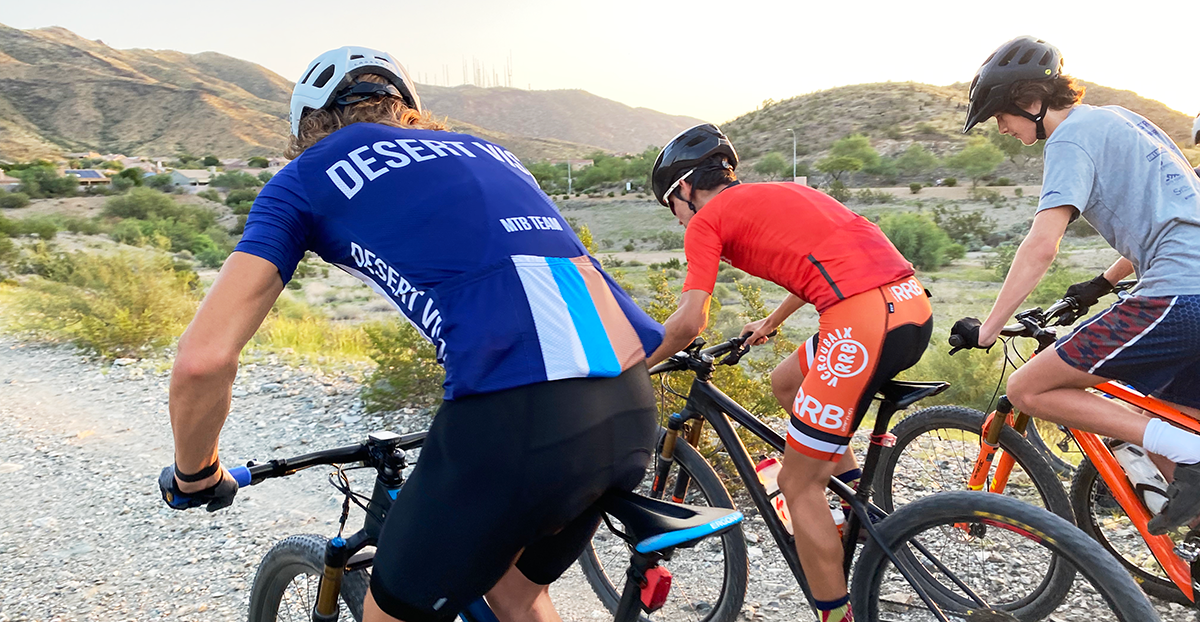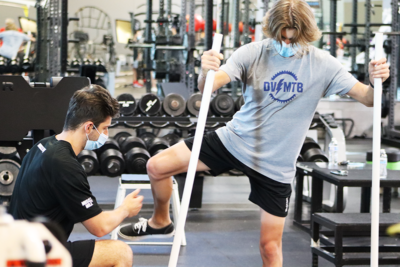Mountain biking can be a thrilling sport, enjoyed by those of all ages throughout each stage of life. When I’m out on the trails, I get to experience nature, an intense or relaxed workout, feelings of accomplishment, and a sense of community when I meet other riders. Moreover, when I see children of all ages on the trail, riding in matching jerseys and being herded by their coaches, I feel hope. Hope that those kids will grow to love a sport that will in turn love them back over decades.
As a physical therapist, I also notice the challenges that kids in this age range may have in participating in a sport that requires a range of physical demands. To fully enjoy any sport, feelings of comfort and accomplishment should rank pretty high on the list. It is eye-opening to see that many kids who are motivated and want to have fun on the trails are often burdened with physical discomfort, pain, and even injuries to the lower back, neck, knees, or ankles. These episodes can not only choke morale for kids, but also lead to greater injury down the road if not addressed early.
A sport such as mountain biking not only requires physical ability, but the reliability and comfort of the bike one is riding. Assuring a bike is appropriately sized for an adolescent can be tricky. During puberty growth spurts, bones, muscles, and tendons grow at different rates. The bike that was a perfect fit last season may suddenly feel extremely uncomfortable the next. The good news is that there are many things that can be done, and perhaps without even purchasing a new bike. Resources abound, and I am here to help you discover who can help and how.
Dialing in your fit!
Today, many youth mountain bike coaches are licensed through the National Interscholastic Cycling Association, and undergo extensive training on how to provide a safe, positive, and inclusive experience for kids on the team. They will also notice performance changes indicative of if and when your child is in discomfort, or on the verge of injury. The coach can provide early intervention, starting with bike fit adjustments that will improve mechanics, facilitate efficiency, and give the athlete’s body the optimal opportunity to function the way it should on a bicycle. It is remarkable to see how adjusting the seat up or down, fore or aft, just a few millimeters, can change the experience of the rider. In more complex situations, or with the purchase of a new bike, many cycling shops offer fitting services.
Coaches may notice:
- A rider’s pelvis rocking side-to-side on the bike indicating improper saddle height or positioning
- Lack of power from inadequate seat height
- Weak posture while riding
- Fatigue in the core or body positioning while riding
Periodization is key
Mountain biking is also a great sport for building fitness. If we can get kids off the couch and onto the mountain, we are helping them discover a whole new world of activity and adventure. However, the transition to racing performance should be respected and phased accordingly. There is quite an adaptation process required—sitting on a saddle for extended periods of time, maintaining core muscle engagement while pedaling and balancing, and building cardiovascular and muscle endurance.
If challenged too quickly, risk of injury and loss of enjoyment increases. Honoring the physiological process is critical. Connecting with your child’s coach and noticing how your child is adapting and progressing will help to ensure a safe and enjoyable relationship with the sport.
Utilize your physical therapist
Speaking of fitness and adaptation, there are ways to help your child’s growing bodies prepare for the demands of riding three times per week, 60-90 minutes at a time. Core strength, stability, and mobility are crucial when building overall physical strength and fitness. Mobility is important for individual joint mobility, but also in mobility that is demonstrated across the whole body in a synchronized manner. The combination of stability and mobility can be encouraged in a variety of ways. Physical therapists can aide before injury occurs, once an injury or pain is identified, and after the pain is resolved to maintain proper physical fitness.
Physical therapy can provide:
- Functional Movement Screens – Assessing where the body is at an advantage and disadvantage with movement and stability indicates which type of daily stretches or exercises can help prep the body to perform best on the bike.
- Rehabilitation / Injury Recovery – Once an injury occurs, a physical therapist is essential early on. The sooner intervention can be made, the sooner proper healing can begin.
- Education – How many times have you reminded your kiddo to sit up straight? For mountain biking, proper posture is key to comfort and performance. Furthermore, your physical therapist can connect with your athlete and provide education on how to take care of their bodies proactively to prevent injury. By developing awareness and fostering healthy habits, your athlete can be handed the tools to be more self-sufficient in this area.
- Sports-Specific Intervention – Your physical therapist can work in sync with your athlete’s coach to ensure that there is good communication, clarity, and accountability around what your athlete needs. Some physical therapists are even trained to assess bike fit and are involved in the sport themselves.
If your child is experiencing discomfort, pain or even injury while mountain biking, the good news is that there are many resources available that are ready to help. Being proactive with bike fit and catching symptoms and signs early on can ensure your athlete has the best chance of enjoying a lifelong sport. If you’re looking for a physical therapist to be part of your support team, Spooner is here to help! Schedule an appointment or complimentary assessment.


